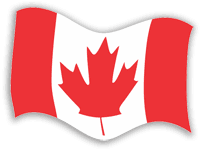|
Canada is the only
country in the western world that has a single unified military
instead of an army, navy and air force. This unified military,
named the Canadian Armed Forces, came into existence on February
1, 1968 just as the separate Canadian Army, Royal Canadian Navy
and Royal Canadian Air Force ceased to exist. The Canadian Armed
Forces is now almost always referred to as the Canadian Forces
or simply the CF.
The man most responsible for pushing the unification of the
Canadian armed services was Paul Hellyer, the minister of
national defence from 1963 to 1968. Hellyer followed a trend
begun by earlier ministers in the late 1940s to unify assorted
functions of the three Canadian services. One of the best early
examples was the military’s medical services which in some bases
in Canada simply matched each other. These early unification
experiments were carried out both to seek greater efficiency and
to avoid the waste of money.
Hellyer was a former member of the Royal Canadian Air Force and
a successful businessman before he entered politics. He had come
to believe that unification of the three services would save
money that could then be used to purchase better equipment. He
also wanted to end rivalry within the military. He thought that
having a single service commanded by a single Chief of the
Defence Staff would end bickering and lobbying by the army, navy
and air force against each other for more money. These ongoing
rivalries made it difficult for the government to manage the
defence budget, to determine what were the real threats to
Canada, and to decide what Canada’s primary defence obligations
were.
Hellyer also believed that the CF should be transformed into a
single force like the United States Marine Corps that would
fight on land, at sea, and in the air. This would allow its
three branches to train and fight together and purchase
equipment that all three might use together. He believed that
such combined arms operations would increase the fighting
ability of the new Canadian Armed Forces.
The process began in 1965 when the Canadian Army was changed
into Force Mobile Command (FMC). Its ranks, structure and tasks
were essentially the same as the Canadian Army’s had been,
primarily the defence of western Europe as part of NATO and
peacekeeping operations. But FMC also included that part of the
Royal Canadian Air Force whose job it was to support the army
with fighters and bombers, reconnaissance planes and light cargo
hauling. The most important part of this scheme was that the
land force and the tactical fighter squadrons of the air force
would train and fight together.
Those parts of the air force which were regularly assigned to
train (and if necessary fight) with the navy were assigned to
the new Maritime Command which was based on the old Royal
Canadian Navy. This meant that Maritime Command would include
all ships and naval training facilities as well fixed-wing
anti-submarine aircraft and ship-borne helicopters of the former
air force.
A new Air Defence Command was to assume responsibility for
Canada’s continental air defence commitments as part of the
North American Air Defence Agreement (NORAD) which had been
concluded between Canada and the United States in 1957-58. Air
Transport Command would operate long range air passenger and
cargo services for the Canadian Armed Forces. Training Command
would recruit and train all members of the Canadian military —
land, sea and air — then send them on to the other commands.
Material Command would assume all storage and supply duties. The
headquarters of the two fighting commands — FMC and Maritime
Command — were moved out of Ottawa to, respectively, St. Hubert
(Quebec) and Halifax. The support commands remained in Ottawa at
National Defence Headquarters with the Chief of the Defence
Staff and his staff. All personnel of the new Canadian Armed
Forces were initially made to adopt the army’s green dress
uniforms and fatigues and the army’s ranks.
Unification began to wear away within its first decade. In 1975,
an Air Command was created in Winnipeg, which took back and
grouped together all of the CF’s air assets. In the late 1970s
and early 1980s traditional uniforms were restored for the navy
and air force. Naval ranks had been restored earlier.
In 1995-96 deep cuts in the Canadian defence budget forced the
Canadian Forces to close the headquarters in Winnipeg, St.
Hubert and Halifax and transfer their chiefs to Ottawa. Today
the forces remain united although inter-service rivalries
continue. A new unified command structure has been put into
place for both Canadian and overseas (or expeditionary)
operations. The first is called Canada Command or CANADACOM
while the largest of the expeditionary commands is called
Canadian Expeditionary Forces Command or CEFCOM. It is
noteworthy that none of Canada’s allies has followed the
Canadian example.
Next Instalment: Peacekeeping Turns into War: the Balkans
The Canadian Experience is a 52-week
history series designed to tell the story of our country to all
Canadians. Sponsored by Multimedia Nova Corporation and
Diversity Media Services partners, the series features articles
by our country’s foremost historians on a wide range of topics.
Past articles and author bios are available at
http://www.cdnexperience.ca. The Canadian
Experience is copyright ©2010-2011 Multimedia Nova
Corporation. |
List of
published "Canadian Experience" articles |

 #50 Canada’s Unique Unified Military
#50 Canada’s Unique Unified Military
